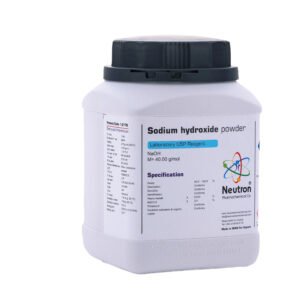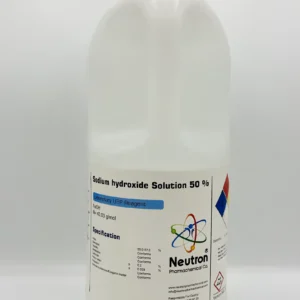Bismuth(iii)nitrate basic
| Formula | Bi5H9N4O22 |
| Chemical formula | Bi5H9N4O22 |
| Density | 4.93g/cm3 |
| Molar mass | 1461.99 g/mol |
| Bulk density | ~ 600 kg/m3 |
| CAS number | 1304-85-4 |
| HS Code | 28342980 |
| EC number | 215-136-8 |
| Storage | Without limitation |
| SDS | available |
| RTECS | EB2977000 |
| Odour | odourless |
| Form | solid |
| Color | colourless |
| p H value | ~ 3.2 (50g/l 20°C) |
| Solubility in water | almost insoluble (20°C) |
| Solubility in ethanol | almost insoluble (20°C) |
| Vapour pressure | low |
| Thermal decomposition | 260 °C |
| Assay | ≥ | 79 | % |
| Description | Conforms | ||
| Identification | Conforms | ||
| Solubility | Conforms | ||
| Carbonate | Conforms | ||
| Chloride | ≤ | 0/035 | % |
| Sulphate | Conforms | ||
| Ammonium salts | Conforms | ||
| Copper | Conforms | ||
| Lead | Conforms | ||
| Silver | Conforms | ||
| Limit of alkalies & alkaline earths | ≤ | 0/5 | % |
| Heavy methals | ≤ | 0/0005 | % |
| Loss on drying | ≤ | 3 | % |
Bismuth(III) nitrate basic, also known as bismuth oxynitrate or bismuth subnitrate, is a basic salt of bismuth containing bismuth ions, nitrate ions, and oxide or hydroxide groups. It appears as a white, odorless powder, typically used in pharmaceutical and chemical applications.
🏭⚗️ Production
This compound is formed by the partial hydrolysis of bismuth(III) nitrate in aqueous solution, especially under mildly basic conditions. It can also result from the controlled thermal decomposition of hydrated bismuth nitrate.
🔬 Properties
Bismuth(III) nitrate basic is a white, crystalline, water-insoluble solid. It is slightly soluble in acids and decomposes upon strong heating. Its structure may vary, but common formulations include BiONO₃ or more complex forms like Bi₅O(OH)₉(NO₃)₄. It is stable under normal storage conditions and is non-flammable.
🧪 Applications
• Used in pharmaceuticals as an astringent and mild antiseptic.
• Employed in thin-layer chromatography (TLC) as part of Dragendorff’s reagent for detecting alkaloids.
• Previously used in cosmetics and as a white pigment in medicinal powders.
• Investigated for photocatalytic and antibacterial properties in modern materials science.





